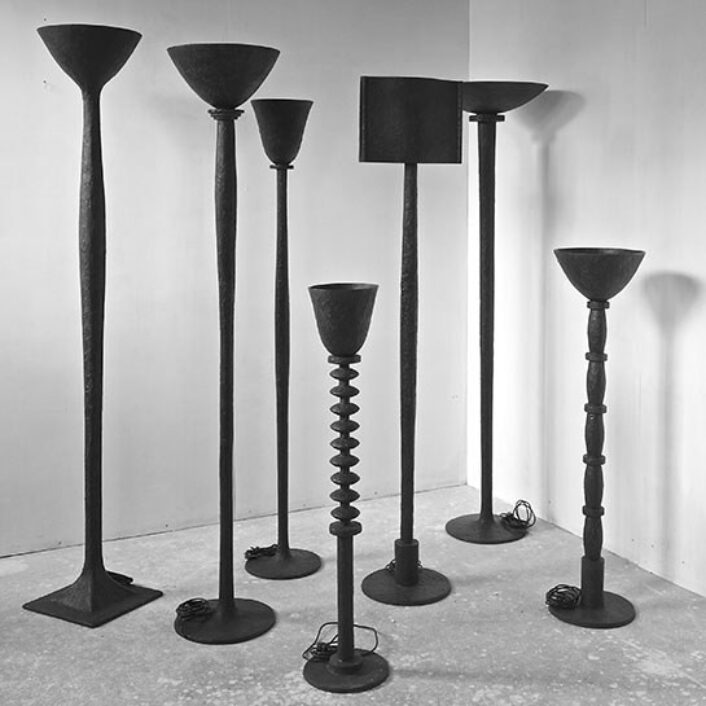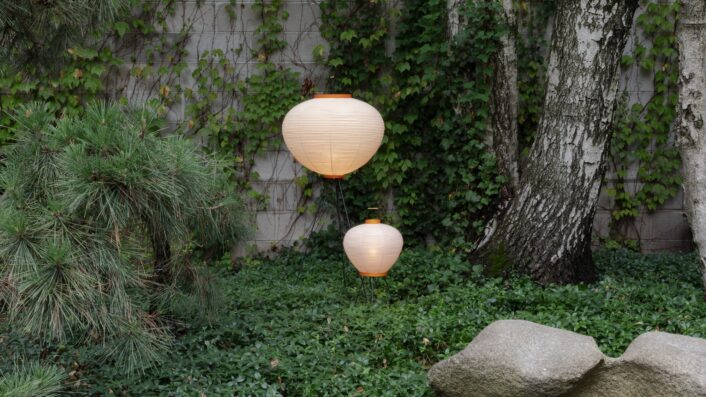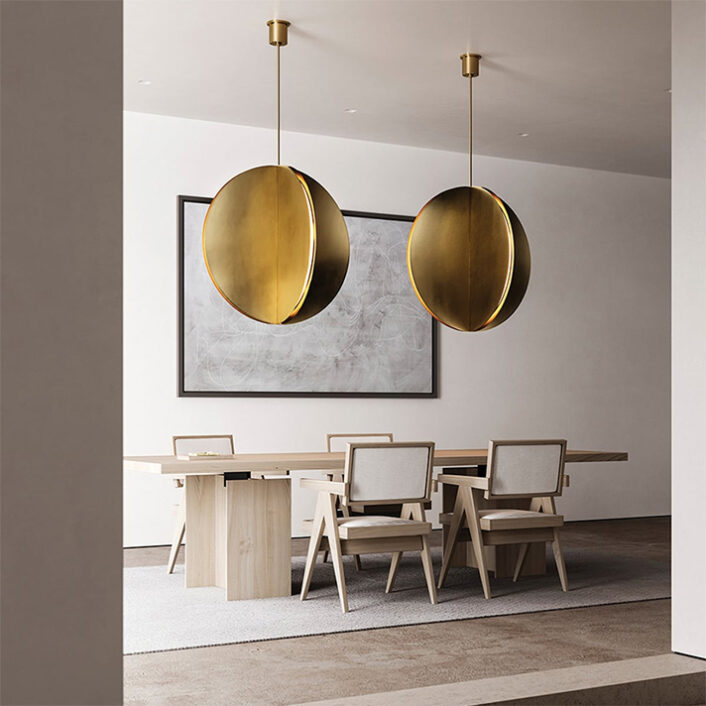Design
David Trubridge
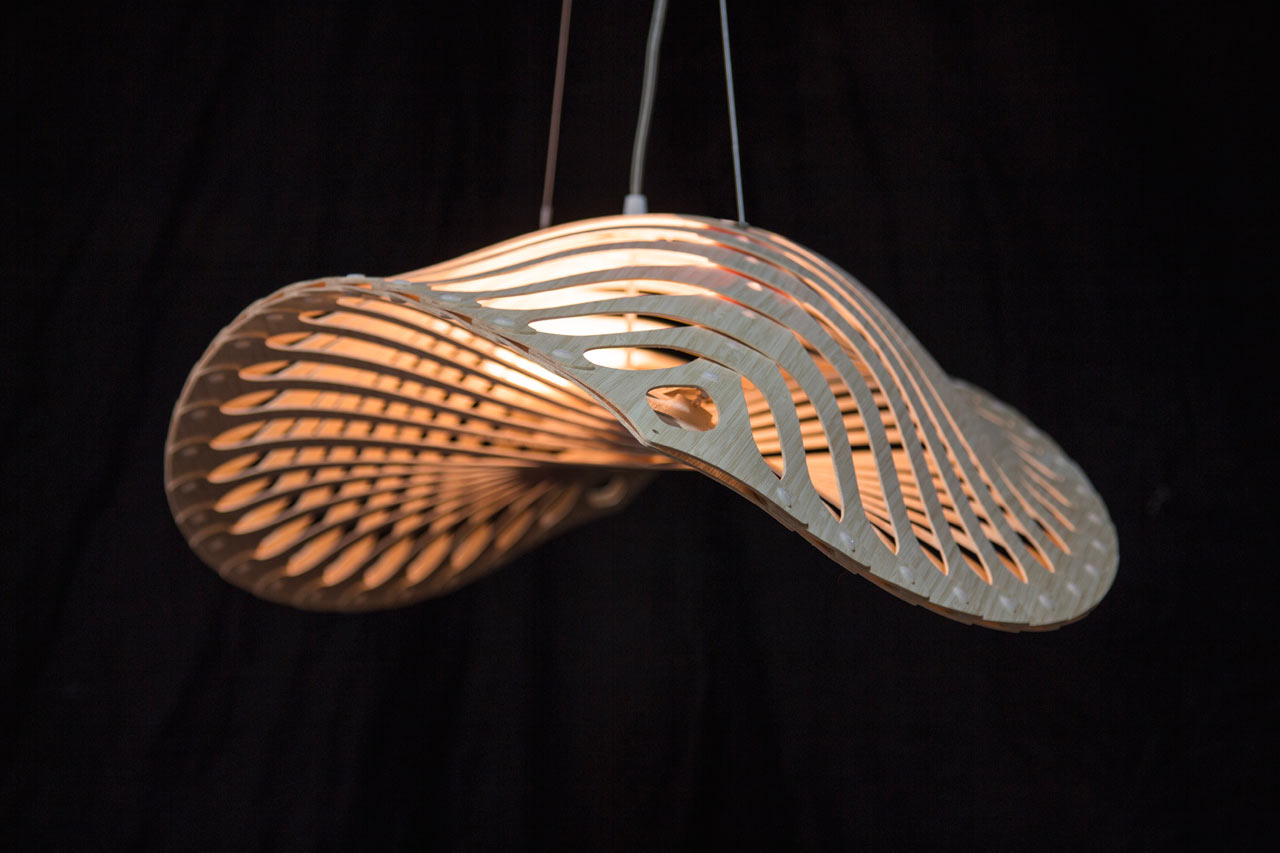
This piece was specifically inspired from things “under the sea.”
Image courtesy of: Design Milk
David Trubridge Design is an internationally renowned design studio that explores patterns found in nature and traditional island cultures. Founded in 1995, the New Zealand-based designer has gradually worked his way from small designer and maker to founding a design and manufacturing company that is well-known throughout the world.
The designer has long been passionate about the environment; this is most likely due to the time he spent at sea during the 1980s when he and his family sailed around the world. Trubridge considers himself (courtesy of Leeker Home) a “Cultural Designer”… in other words, someone who continuously promotes sustainable living “while also nourishing people spiritually and culturally.”
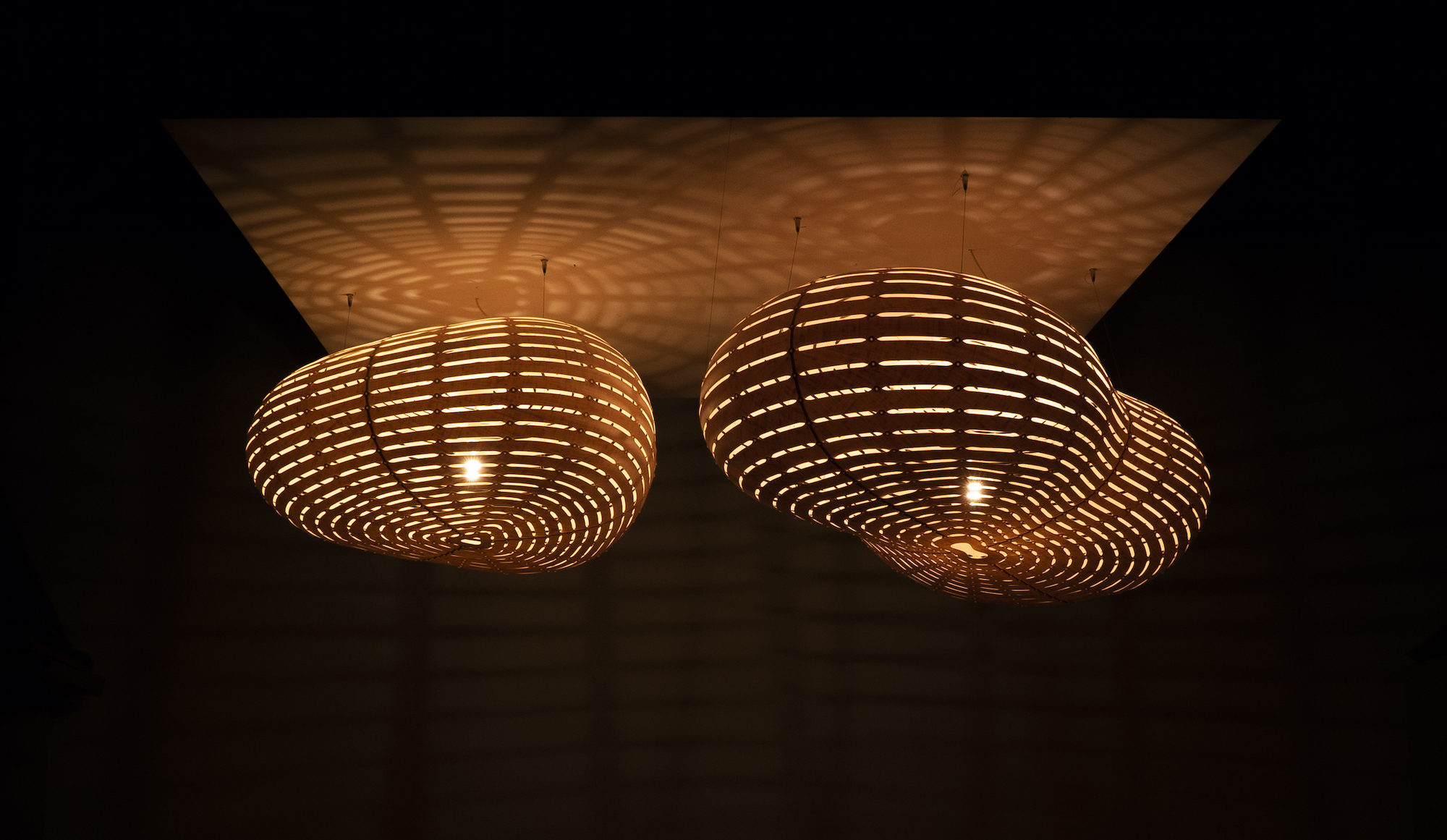
Part of the Cloud Collection, the primary material is FSC certified bamboo.
Image courtesy of: Surface Magazine
Last year, Trubridge reimagined two of his best-selling collections; except this time they were produced in ultra-sustainable materials. The original collection, the Cloud Collection, was launched in 2008. The series was an assortment of plastic, biomorphic pendants that were inspired by fog clouds that Trubridge witnessed floating above islands while he was sailing. Two years following his 2006 journey, Trubridge and his studio presented the Ebb Collection which consisted of a series of lights wrapped in alternating “helical bands of polycarbonate and plywood.” Courtesy of Surface Magazine, he explains how this pays homage to water, “I can sit for hours by a river, just watching the constant dancing of its movement.”
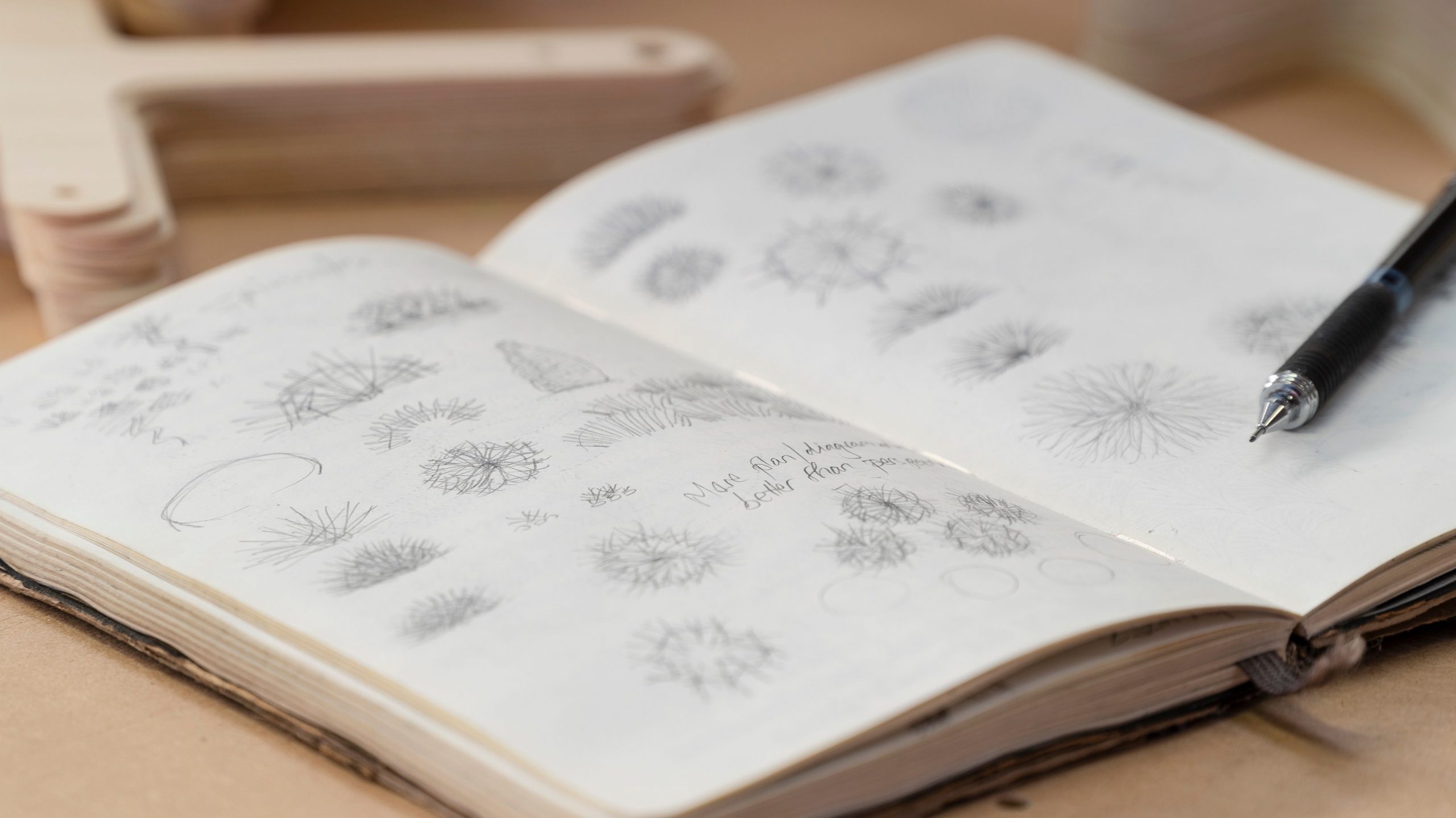
Pages from Trubridge’s journal.
Image courtesy of: YLighting
Reimagining both the Ebb and Cloud Collections in a sustainable fashion was of the utmost importance to Trubridge. The originals from both collections were made from plastic; with a new ethos in mind, that method was no longer possible. He says (courtesy of Surface Magazine), “We decided last year, for environmental reasons, to pull all plastic lights from our collection.” The choice meant no longer offering some of the brand’s most popular items; however especially because the pieces were inspired by nature, the designer felt that this was crucial.
The new versions are produced from almost 100% bamboo plywood that is applied in horizontal strips. This methodology allows light to shine through the slats while offering the same airiness as the translucent plastic version did. Additional changes include two size options and ten colors choices that range from pink to lime green.
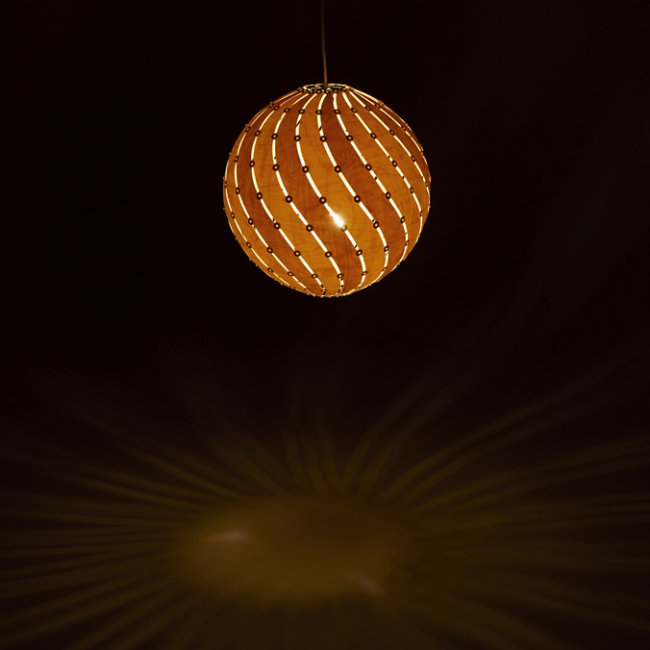
Ebb Bounce Pendant Light. Soft blades attach to create this round shape. The pendant’s shadows are warm and elegant.
Image courtesy of: YLighting
The Ebb Collection was remade in a flexible Birch plywood from Koskisen, a noted Finnish firm. Originally, this collection was from a set of four designs that featured spiraling patterns of black and white. This is because in some situations, natural wood is either inappropriate or there is a need to hide the bulb. Once plastic was deemed an inappropriate material, this series was suspended. Discovering this new thin birch plywood allowed the Ebb Collection to reappear. Luckily, the plywood is so thin that it can act like a diffuser as light comes through the two crossed veneer layers.
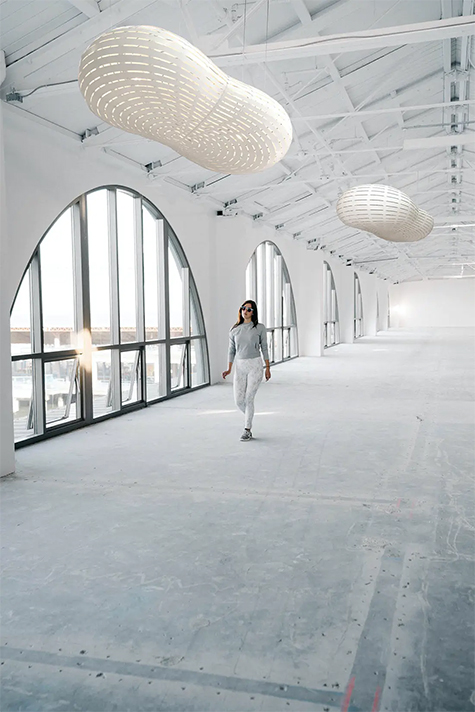
Two pendants from the Cloud Collection.
We love this quote by the designer, “Never follow trends as you will always be only a follower, trying to keep up with the truly creative people who set them- trendy designer is here today, gone tomorrow.”
Image courtesy of: David Trubridge
As amazing as the Ebb Collection is, an additional bonus is that it gets delivered in a flatpack kit. This is an additional way the company is able to reduce their carbon footprint. Along the same lines, the company is constantly evaluating new materials to use; for example, they contracted with the New Zealand Crown Research Institute on several types of biopolymer (plastic made from replenished material) and mixed it with other local materials such as flax. Clearly, having such a limited number of options for material is difficult.
The central focus comes back to sustainability and environmentally responsible design. Trubridge told James Lyall Smith of The Local Project), “Sustainability is totally fundamental to all our work,” says David. “But I have no illusions that we are currently sustainable. Something is only sustainable if it can continue to be done forever. There is precious little about our consumer dominated lives that can do that. So, we don’t claim to be sustainable.” He goes on to elaborate, “we say that we are doing all we can to be environmentally and socially responsible, but that we are not perfect, and we are open about our failings. Our aim and duty is to continue to improve each year.”
